I've managed a few trips out this month which bucks the trend of recent months. The truth is that a lot of my time recently has been spent planing a move down to Devon but for reasons that I won't go into here I have decided against a move down south.
In my opinion South Staffs is just as good for wildlife as any other county as long as you take the time to look.
For instance, by keeping my eyes peeled for even the smallest of creatures I managed to find this moth taking shelter on a Silver Birch tree on Highgate Common:
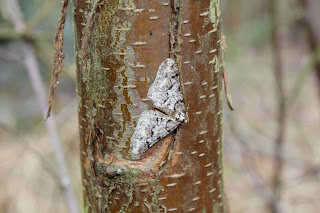 |
| Spring Usher (Agriopis leucophaearia) |
I particularly like the name Spring Usher as it aptly describes when this species emerges as an adult, which is anywhere between February and March. The female moth is wingless and the larvae feed mainly on Oak.
Despite early signs of spring there were still plenty of signs of winter.
The work party at Highgate Common could hear a large number of birds causing a very loud commotion just the other side of some trees. They were that loud (the birds not the work party) that the common consensus was that they were probably Starlings.
On closer inspection it turned out to be a flock of Linnet! Although there were probably less than 100 birds it was still the largest group of Linnet I remember seeing.
Although Linnet are known to form large flocks in winter they are rather gregarious birds all year round and will often breed in small colonies of up to 20 individuals.
Talking of birds, a few weekends ago I was lucky enough to take part in some ringing at an orchard in Worcestershire. The cold weather had driven large numbers of Fieldfare to the orchards where there were plenty of apples for them to eat.
Apparently Fieldfare don't actually like eating apples when they have a choice, they only turn to them when more desirable food sources run out.
This is the same for a lot of animal species, even us humans. If you are anything like me, when you have done your weekly shop you will eat your favourite things first and leave less desirable foods until last. Birds are no different.
This is why a lot of the time you will see a bush full of berries until very late in the winter. It is not that the birds are deliberately saving these berries for harder times, it is just that there are other things around that they would rather eat.
As it turned out a lot of the apples had already been decimated by the Fieldfare in preceding weeks and there weren't a lot left so we only managed to catch roughly 60 birds.
For whatever reason I didn't think to take any photos of the Fieldfare but I did take some photos of some personal highlights for me a Jay (ringing tick) and a Sparrowhawk.
 |
| Jay (Garrulus glandarius) |
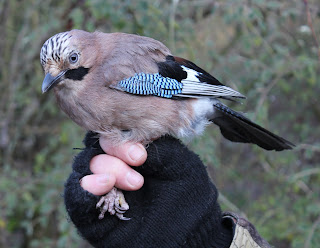 |
| Jay (Garrulus glandarius)
|
 |
| Sparrowhawk (Accipiter nisus) |
 |
| Sparrowhawk (Accipiter nisus)
|
I was also shown an old Dormouse nest which was another personal first.
 |
| Dormouse (Muscardinus avellanarius) nest |
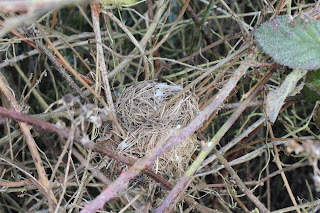 |
| Dormouse (Muscardinus avellanarius) nest
|
Dormice are one of only a select few British mammals that truly hibernate during winter. However it is highly unlikely that one would be hibernating in this nest, they would have found a warmer spot to spend the winter.
February truly has been a month of firsts as just yesterday I had my first garden sighting of Lesser Redpoll (
Carduelis cabaret).
I only managed to get some record shots as I couldn't get very close to them, the light was appalling and my hands were shaking from the excitement! I mainly focused on a rather pale individual that I was hoping was a Mealy Redpoll (
Carduelis flammea) but the general consensus is that it was just probably a rather pale Lesser Redpoll.
 |
| "normal British" Lesser Redpoll |
 |
| Pale Lesser Redpoll |
 |
| Pale Lesser Redpoll on left with slightly darker bird on right |
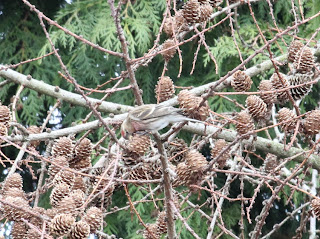 |
| Pale Lesser Redpoll, the pink on the breast makes this a male |
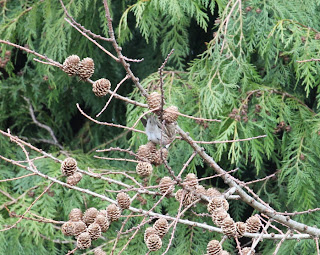 |
| Pale Lesser Redpoll
|
 |
| Pale Lesser Redpoll on left with much darker bird on right |
 |
| Pale Lesser Redpoll on left with slightly darker bird on right |
The Redpoll were feeding with a flock of the loosely related Goldfinch (
Carduelis carduelis). I am hoping that the Goldfinch will show the Redpoll where my nyjer seed feeder is, then I will be able to get some better photos!